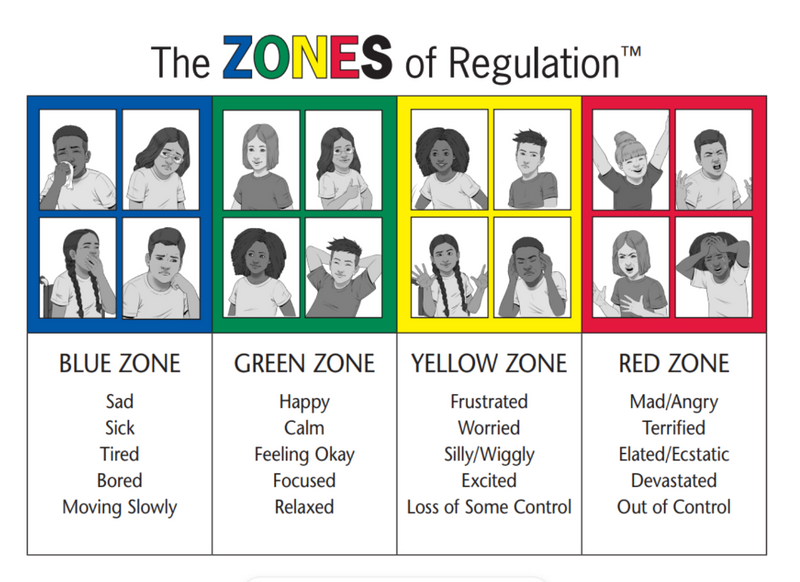Zones of Regulation
At Ascot Heath Primary School, we recognise the importance of promoting positive mental health and emotional wellbeing to our pupils and their families. We aim to create an open culture around the discussion of mental health and wellbeing and to empower our children be able to regulate their emotions. By implementing the Zones of Regulation curriculum we aim to teach our pupils to identify emotions in themselves and others and provide them with bank of strategies to help regulate their emotions and improve their wellbeing.
The Zones of Regulation is a curriculum based around the use of four colours to help children self-identify how they’re feeling and categorise it based on colour. The curriculum also helps children better understand their emotions, sensory needs and thinking patterns. The children learn different strategies to cope and manage their emotions based on which colour zone they’re in. Additionally, the Zones of Regulation helps children to recognise their own triggers, learn to read facial expressions, develop problem-solving skills, and become more attuned to how their actions affect other people.
The video below also explains more about the Zones of Regulation and some strategies that can be used:
Here is a list of books that link closely with Zones of Regulation:
Zones of Regulation at home
You can support you child/children at home by referring to the zones when you are talking about feelings or addressing behaviours. Consider trying some of these ideas…
- Identify your own feelings using zones language in front of your child, e.g. I’m frustrated. I think I am in the yellow zone.”
- Talk about what tool you will use to be in the appropriate zone, e.g. “I need to take four deep breaths to help get me back to the green zone.”
- At times, wonder which zone your child is in , e.g. “I wonder if you are in the yellow zone at the moment, you seem a bit worried.”
- Discuss which zone a character in a film / book might be in.
- Engaging your child in discussion around zones when they are in the red zone is unlikely to be effective. You need to discuss the different zones and tools they can use when they are more regulated/calm.
- Explore which tools help your child return to the green zone, e.g. listening to relaxing music, colouring, squeezing a stress ball, breathing exercises etc.
- Regular check-ins, e.g. “How are you feeling now?” and “How can you get back to green?”
- Share how their behaviour is affecting your zone. For example, if they are in the green zone, you could comment that their behaviour is also helping you feel happy / be in the green zone.
- Put up and reference the zones visuals and tools in your home.
- Praise and encourage your child when they share which zone they are in.
Please find below the PowerPoint that was shared at our parent meeting. If you have any questions, please speak to your child's class teacher or Mrs Elston.

